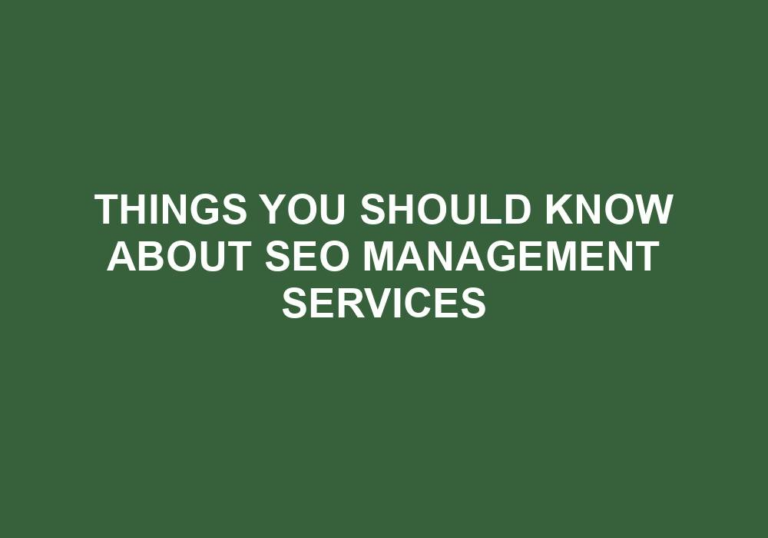Are you looking to seamlessly integrate SEO into your content strategy? Well, you’ve come to the right place! In today’s digital world, having a strong online presence is crucial, and optimizing your content for search engines is key. But don’t worry, it’s not as complicated as it sounds. In this article, we’ll explore the importance of integrating SEO into your content strategy and share some tips to help you get started.
Now, you might be wondering, what is SEO? SEO stands for Search Engine Optimization, which basically means making your website more visible and rank higher in search engine results. By applying SEO strategies to your content, you can attract more organic traffic and increase your chances of being discovered by your target audience.
But why is it essential to seamlessly integrate SEO into your content strategy? Well, think of it as the secret ingredient that takes your content to the next level. By optimizing your content for search engines, you ensure that it reaches the right people at the right time. It helps you understand what your audience is searching for and enables you to create valuable content that meets their needs.
So, whether you’re a blogger, an online business owner, or a content creator, incorporating SEO into your content strategy is a game-changer. In the following paragraphs, we’ll dive deeper into the world of SEO and equip you with practical tips that will help you optimize your content and achieve better visibility online. Get ready to take your content strategy to new heights!
- Conduct keyword research to identify relevant and high-ranking keywords.
- Create high-quality, engaging content that incorporates these keywords naturally.
- Optimize your on-page elements, such as title tags, meta descriptions, and headers.
- Build quality backlinks by reaching out to other websites and collaborating on content.
- Monitor and analyze your website’s performance using analytics tools to make data-driven improvements.
By following these steps, you’ll be on your way to seamlessly integrating SEO into your content strategy!
Seamlessly Integrating SEO into Your Content Strategy: A Comprehensive Guide
Building an effective content strategy that incorporates SEO practices is crucial for businesses in today’s digital landscape. By seamlessly integrating SEO into your content strategy, you can enhance your online visibility, attract more organic traffic, and drive conversions. In this comprehensive guide, we will explore the key elements and strategies to effectively integrate SEO into your content strategy. From keyword research to on-page optimization, we will cover it all, equipping you with the knowledge to elevate your online presence and achieve your business goals.
1. The Importance of Keyword Research
Keyword research is the foundation of any successful SEO-focused content strategy. It involves identifying and targeting the search terms that your target audience is using to find information, products, or services related to your business. By conducting thorough keyword research, you can develop a list of high-intent keywords that align with your content goals. These keywords will serve as the building blocks of your content strategy, ensuring that your content is optimized for relevancy and search engine rankings.
Start by brainstorming a list of broad topics and themes related to your business or industry. Then use keyword research tools such as Google Keyword Planner, SEMrush, or Moz Keyword Explorer to identify relevant keywords with high search volumes and low competition. Look for long-tail keywords, which are more specific and targeted, as they often have higher conversion rates. Once you have a list of keywords, strategically incorporate them into your content to optimize for search engines while providing valuable information to your audience.
Remember, keyword research is an ongoing process. Regularly analyze the performance of your keywords and adjust your strategy accordingly. Stay up to date with the latest trends and changes in search engine algorithms to stay ahead of the competition and maintain a strong online presence.
2. Creating High-Quality, SEO-Optimized Content
Once you have identified your target keywords, it’s time to create high-quality, SEO-optimized content that resonates with your audience and ranks well in search engine results. Content that is valuable, informative, and well-structured not only attracts readers but also increases your chances of ranking higher in search engine rankings. Here are some key steps to follow:
- Understand your audience: Before creating content, it’s essential to understand your target audience’s needs, preferences, and pain points. Conduct audience research and create buyer personas to gain insights into your ideal customers’ demographics, interests, and motivations. Tailor your content to address their specific needs and provide solutions to their problems.
- Create engaging headlines: Craft compelling headlines that not only capture the reader’s attention but also include your target keywords. Headlines play a crucial role in click-through rates, so make them catchy, informative, and optimized for both search engines and human readers.
- Structure your content: Break your content into sections with subheadings to enhance readability and improve SEO. Use H2 and H3 headings to organize your content and include your target keywords naturally within the subheadings.
- Optimize your content: Incorporate your target keywords strategically throughout your content, including in the introduction, body, and conclusion. However, ensure that the keywords are used naturally and don’t compromise the quality or flow of your writing. Use variations of your keywords to avoid keyword stuffing, which can negatively impact your search rankings.
- Include relevant visuals: Visual elements such as images, infographics, and videos not only enhance the aesthetic appeal of your content but also improve user engagement. Optimize your visuals by adding alt text and descriptive captions that include your target keywords.
By creating high-quality, SEO-optimized content, you can improve your chances of ranking higher in search engine results, attract more organic traffic, and establish your brand as a credible source of information within your industry.
3. Harnessing the Power of On-Page Optimization
On-page optimization is a fundamental aspect of seamlessly integrating SEO into your content strategy. It involves optimizing various elements on your website to improve its visibility in search engine rankings. Here are some key areas to focus on:
Meta Tags and Descriptions
Meta tags and descriptions provide concise information about the content of a webpage. They appear in search engine result pages and influence click-through rates. Include your target keywords naturally within your meta tags and descriptions to optimize them for search engines.
URL Structure
Ensure that your URLs are clean, concise, and include your target keywords. Avoid using long, complex URLs that are difficult for search engines and users to understand. Use hyphens to separate words within your URLs for improved readability and SEO.
Internal and External Linking
Internal and external linking play a crucial role in enhancing the SEO value of your webpages. Internal linking refers to linking to other pages within your website, while external linking involves linking to relevant, authoritative websites. Use descriptive anchor text that includes your target keywords to optimize your links for search engines.
Page Load Speed
Optimize your website’s page load speed by compressing images, minifying code, and using a content delivery network (CDN). A fast-loading website not only improves user experience but also contributes to higher search engine rankings.
Mobile-Friendly Design
In today’s mobile-dominated world, having a responsive and mobile-friendly website is essential. Google prioritizes mobile-friendly websites in its search results, so ensure that your website is optimized for mobile devices.
By focusing on on-page optimization, you can improve your website’s visibility, enhance user experience, and increase your chances of ranking higher in search engine rankings.
Key Elements of a Successful SEO-Integrated Content Strategy
Intro: A successful content strategy involves more than just incorporating SEO practices into your content. It requires a comprehensive approach that includes various elements to maximize the effectiveness of your efforts. In this section, we will explore three key elements that are essential for a successful SEO-integrated content strategy.
4. Strategic Content Planning and Scheduling
A successful content strategy starts with strategic planning and scheduling. This involves identifying your goals, understanding your target audience, and creating a content calendar to ensure consistent and relevant content creation.
Begin by setting clear goals for your content strategy. Do you want to increase brand awareness, drive website traffic, generate leads, or establish thought leadership? Once you have defined your goals, conduct thorough research on your target audience. Understand their demographics, interests, pain points, and preferences. This will help you create content that resonates with your audience and provides value.
Next, develop a content calendar that outlines the topics, formats, and publishing dates for your content. Consistency is key, so aim to create and publish content regularly. This will not only keep your audience engaged but also signal to search engines that your website is active and relevant.
5. Incorporating Multimedia and Visual Content
Incorporating multimedia and visual content is an effective way to engage your audience and enhance the SEO value of your content. Visual elements such as images, videos, infographics, and interactive media not only grab attention but also increase the time users spend on your website.
Optimize your multimedia content by adding relevant alt text, captions, and descriptive file names. This will help search engines understand the context of your visual content and improve its visibility in search results. Additionally, make sure your multimedia content is responsive and optimized for fast loading on all devices.
6. Promoting and Amplifying Your Content
Creating high-quality content is just the first step. To maximize its impact, you need to promote and amplify your content through various channels. This involves leveraging social media platforms, email marketing, influencer outreach, and collaborations.
Share your content on relevant social media platforms and engage with your audience. Utilize email marketing to reach out to your subscribers and inform them about new content. Collaborate with influencers and industry experts to expand your reach and tap into new audiences. By actively promoting and amplifying your content, you increase its visibility, attract more traffic, and improve your chances of earning valuable backlinks.
Measuring Success: Tracking and Analyzing Your SEO-Integrated Content Strategy
Intro: Tracking and analyzing the performance of your SEO-integrated content strategy is crucial to determine its success and make informed decisions for future optimizations. In this section, we will explore key metrics and tools to measure the effectiveness of your content strategy.
7. Key Metrics to Track
Tracking the right metrics will provide valuable insights into the performance of your SEO-integrated content strategy. Here are some key metrics to consider:
Organic Traffic
Monitor the amount of organic traffic your website receives. By tracking this metric, you can determine whether your content is attracting the right audience and resonating with them.
Keyword Rankings
Track the rankings of your target keywords to see how your content is performing in search engine results. Identify keywords that are performing well and those that need improvement.
Conversion Rate
Measure the number of visitors who take the desired actions on your website, such as making a purchase, signing up for a newsletter, or filling out a contact form. This will help you gauge the effectiveness of your content in driving conversions.
8. Tools for Analyzing Performance
There are numerous tools available to track and analyze the performance of your SEO-integrated content strategy. Some popular options include:
- Google Analytics: A powerful and free tool that provides in-depth insights into website traffic, user behavior, and conversion rates.
- Ahrefs: A comprehensive SEO tool that offers keyword research, backlink analysis, and competitor analysis features.
- Moz: A suite of SEO tools that includes keyword research, rank tracking, link building, and site auditing capabilities.
Utilize these tools to track your progress, identify areas for improvement, and make data-driven decisions for optimizing your SEO-integrated content strategy.
In conclusion, seamlessly integrating SEO into your content strategy is essential for maximizing your online visibility, attracting organic traffic, and driving conversions. By conducting thorough keyword research, creating high-quality, SEO-optimized content, and harnessing the power of on-page optimization, you can enhance your chances of ranking higher in search engine results.
Remember to focus on strategic content planning and scheduling, incorporate multimedia and visual content, and promote your content effectively to amplify its impact. Finally, track and analyze the performance of your SEO-integrated content strategy using relevant metrics and tools to make data-driven optimizations and ensure long-term success.
#Key Takeaways: Seamlessly Integrating SEO into Your Content Strategy
1. Understand your audience and their needs to create relevant and valuable content.
2. Conduct keyword research to identify the terms and phrases your audience is searching for.
3. Optimize your content by incorporating these keywords naturally throughout your text.
4. Use descriptive and compelling meta tags to improve your click-through rates in search results.
5. Continuously monitor and analyze your SEO performance to make necessary adjustments and improvements.
Frequently Asked Questions
When it comes to seamlessly integrating SEO into your content strategy, there are a few common questions that arise. We’ve compiled a list of the top queries and provided detailed answers to help you navigate this process with ease.
1. How can I optimize my content for search engines without sacrificing readability?
Optimizing your content for search engines doesn’t mean sacrificing readability. In fact, it is possible to strike the perfect balance and create content that is both SEO-friendly and engaging for your audience. Here’s how you can do it:
Firstly, conduct keyword research to identify the relevant keywords for your content. Once you have the keywords, incorporate them naturally into your content, ensuring they flow seamlessly. Focus on the user experience and write valuable, informative content that addresses the needs of your target audience.
Secondly, optimize the structure of your content. Use headings, bullet points, and subheadings to break up your content and make it easy to read. This enhances the user experience and helps search engines understand the structure of your page.
2. Is it necessary to have a blog for SEO purposes?
While having a blog can be beneficial for SEO, it’s not the only way to improve your search engine rankings. However, having a blog can provide several advantages:
Firstly, a blog allows you to regularly publish fresh, high-quality content. Search engines love fresh content, and regularly updating your blog with relevant articles can help boost your visibility in search results.
Secondly, a blog provides an opportunity for internal linking. When you create new blog posts, you can link to relevant pages on your website, which helps search engines understand the structure and content of your site.
3. How can I optimize my images for SEO?
Images play an essential role in engaging your audience and improving SEO. To optimize your images for search engines, follow these best practices:
Firstly, choose the right file name for your image. Be descriptive and include relevant keywords in the file name. Additionally, compress your images to reduce file size without compromising quality. This helps improve website loading speed, which is a ranking factor for search engines.
Secondly, use alt tags. Alt tags are HTML attributes that provide alternative text when an image cannot be displayed. Include descriptive text that accurately represents the image and incorporates relevant keywords.
4. How can I track the success of my SEO efforts?
Tracking the success of your SEO efforts is crucial to understand what’s working and what needs improvement. Here are a few ways to monitor your SEO performance:
Firstly, use Google Analytics. This free tool provides valuable insights into your website’s traffic, including the source of your visitors, the pages they visit, and the keywords that led them to your site. Set up goals in Google Analytics to track conversions and measure the effectiveness of your SEO strategy.
Secondly, monitor your keyword rankings. Track the position of your target keywords in search engine results to assess the impact of your SEO efforts. Several tools are available to help you track keyword rankings and provide valuable data to refine your strategy.
5. What role does mobile optimization play in SEO?
Mobile optimization is crucial for SEO because a significant portion of web traffic comes from mobile devices. To ensure your website is mobile-friendly, follow these steps:
Firstly, use responsive design. Responsive websites automatically adjust their layout and content to fit the screen size of the device being used, providing an optimal viewing experience for all users.
Secondly, optimize page loading speed. Mobile users expect fast-loading pages, and search engines consider page speed as a ranking factor. Compress images, minify code, and use caching techniques to improve your website’s loading time on mobile devices.
Summary
SEO is important for making sure people can find your website through search engines. By using the right keywords, creating high-quality content, and optimizing your website, you can improve your search engine rankings. This will help more people discover your website and increase your online visibility.
Including relevant keywords in your content and meta descriptions is crucial. It’s also important to make your website user-friendly, with easy navigation and fast loading times. By creating valuable and engaging content, you can attract and retain visitors, which will improve your SEO performance. Remember to regularly monitor and analyze your SEO efforts to make adjustments and stay up-to-date with search engine algorithms. By integrating SEO into your content strategy, you can maximize your website’s visibility and reach.





